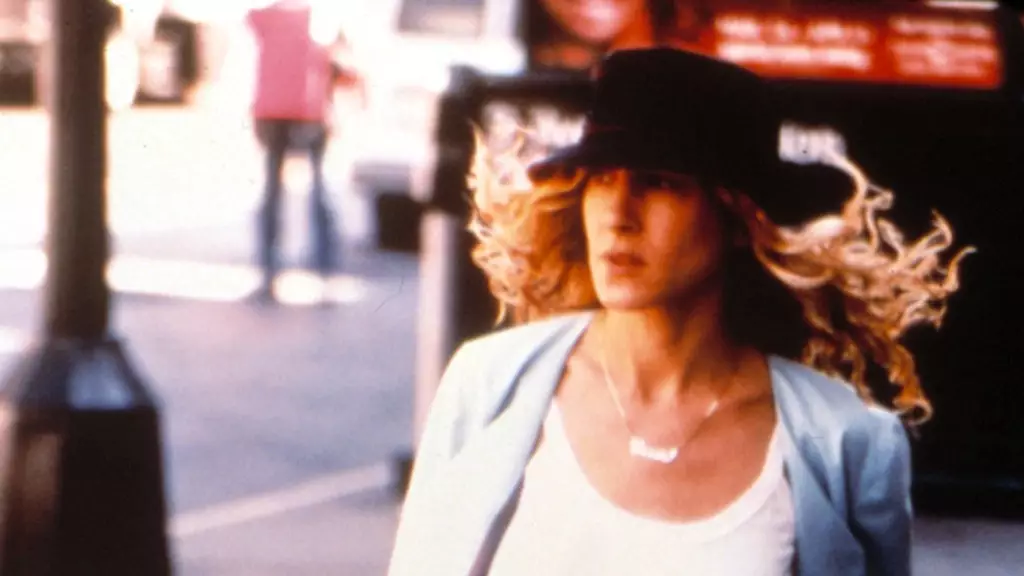In a world where breakthrough performances are often celebrated without a hint of doubt, Sarah Jessica Parker’s initial reluctance to embrace her role in “Sex and the City” offers a rare glimpse into the insecurities faced by even the most accomplished actors. When the HBO series was picked up after its pilot episode in June 1997, Parker’s instinct was to recoil, leading her to request her agent to “get me out” of the project. This moment, fraught with uncertainty, illustrates how significant opportunities can initially feel daunting, especially in an industry that often values consistency over spontaneity.
Many might wonder what weighed heavily on her mind. While conducting a candid conversation with her co-star Kristin Davis on the podcast “Are You a Charlotte?”, Parker candidly confessed her anxieties about committing to a television series. It became clear that the decision was not only about the job security that comes with a long-running show but also about the nature of the work that she held dear—working on varied projects that allowed her to shapeshift and adapt in her acting career.
The Burden of Repetition
For Parker, the thought of a long-term commitment to a single character felt like a double-edged sword. She articulated a common fear among artists: the fear of stagnation. The pressure of performing the same role week-in and week-out can lead to a sense of monotony and, paradoxically, lead to artistic suffocation. “It’s very hard to explain. It also kind of depressed me,” she reflected, encapsulating a sentiment that many creatives share when faced with the prospect of routine.
Her success as a “journeyman” actor, known for taking on a variety of roles rather than committing to prolonged productions, shaped her perspective. Parker enjoyed the freedom that came with smaller guest appearances, roles which allowed her to engage in diverse creative endeavors, be it in film, theater, or television. One can understand why the idea of being tethered to a single series brought on such anxiety—she was someone who thrived on change and variety, seeking the thrill of new characters and stories.
Unexpected Transformation
However, the tide began to shift after her encounter with costume designer Patricia Field. The initial oppressive nature of the commitment transformed into inspiration, opening her eyes to the colorful and vast possibilities that “Sex and the City” could provide. This pivotal meeting became a watershed moment for Parker, as she transitioned from fearing a potentially limiting role to embracing the creative opportunities that awaited her.
What was once a disheartening commitment morphed into a vibrant palette for self-expression. Parker’s ultimate realization that the show could facilitate her growth rather than stifle it is a testament to the unforeseen impacts of collaboration and visionary teamwork. She later expressed a profound gratitude for her time on set, stating, “there was no place I would rather have been than on our set every single solitary day.”
Embracing Identities
Parker’s journey reveals an interesting facet of celebrity culture: the idolization of roles that actors play can blur the lines between personal identity and professional persona. The initial hesitation she faced regarding her role as Carrie Bradshaw starkly contrasts with how the character became emblematic of a generation, encapsulating themes of friendship, love, and independence in an urban setting.
This dissonance raises an important question: Can actors fully realize the essence of a character without initially feeling comfortable in the role? It seems that Parker’s experience underlines an essential truth in artistic ventures; sometimes, the characters that resonate most profoundly with audiences are born from a place of initial uncertainty.
As “Sex and the City” went on to redefine television portrayals of modern women, it did so against a backdrop of Parker’s initial fears. The show ran for six successful seasons, along with two feature films and the prequel series “The Carrie Diaries.” Parker’s evolution, from an uncertain actress to an iconic figure in pop culture, stands as a powerful reminder that embracing discomfort can lead to extraordinary successes.
Her journey teaches us that even amidst doubt, the willingness to push through and explore is often where true magic lies. The potential for transformation is boundless as long as we allow ourselves the space to grow, adapt, and pursue our passions, even when they frighten us.

